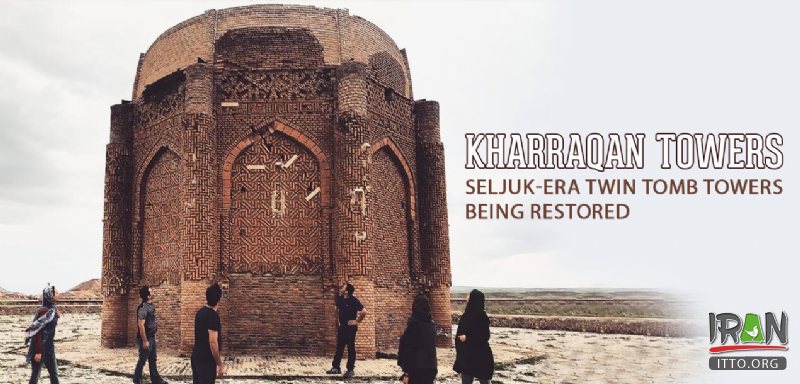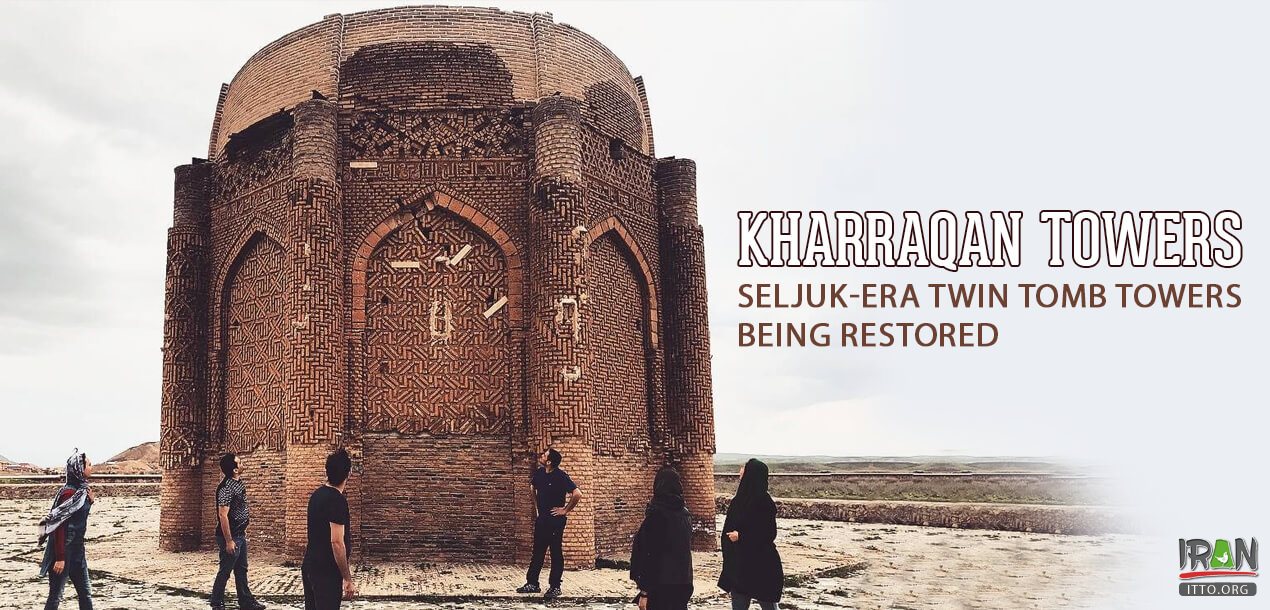Rehabilitation work has begun on the historical Kharaqan twin tomb towers in Avaj, northwestern Qazvin province, a provincial tourism chief has said.
To protect and maintain valuable historical monuments and prevent their destruction, a restoration project has been commenced on the Seljuk-era (1037–1194) towers, Alireza Khazaeli said on Sunday.
Located in the Hesar village, the octagonal brick structures stand 13 meters tall and each side is 4 meters wide.
Until the early 1960s, based on inscriptions in the towers, it was thought that these two structures were the tombs of two Imamzadehs, Hadideh Khatoon and Mohammad, descendants of the seventh Shiite Imam Musa Kazim (as), but later studies revealed that two Seljuk Turks, Abu Saeid Bijar and Abu Mansour Iltaitiare, buried in these tombs.
The restoration project aims at preserving and strengthening the towers, which were damaged by the spring heavy rain and flood, the official added.
Being an early example of geometric ornament and double domes in the 11th century, the structures were inscribed on the National Heritage list in 1977.
The official also added that in this phase of the project, top roofs, walls, interior walls decorations, and gutters are being restored with a budget of 500 million rials (about $12,000).
Both towers were significantly damaged by the 2002 Buin Zahra earthquake. They were in a good state of preservation before the event, suggesting it was one of the most powerful quakes in the region for approximately 900 years. Since then, the towers have been restored several times.
The Seljuks, a Turkic dynasty of Central Asian nomadic origins, became the new rulers of the eastern Islamic lands following their defeat of the powerful Ghaznavids at the Battle of Dandanakan (1040).
By 1055, the Seljuks had reached and taken over Baghdad, which put an end to Buyid rule, and established themselves as the new protectors of the Abbasid caliphate and Sunni Islam. Within fifty years, the Seljuks created a vast though relatively short-lived empire, encompassing all of Iran, Iraq, and much of Anatolia.
By the close of the eleventh century, as the Seljuk realm became troubled due to internal conflicts and the division of the realm among heirs, the empire dissolved into separate territories governed by different branches of the dynasty.
The main branch of the Seljuk house, the so-called Great Seljuks, maintained control over Iran. Under the Seljuk sultanate, Iran enjoyed a period of material and cultural prosperity, and the ingenuity in architecture and the arts during this period had a notable impact on later artistic developments.



